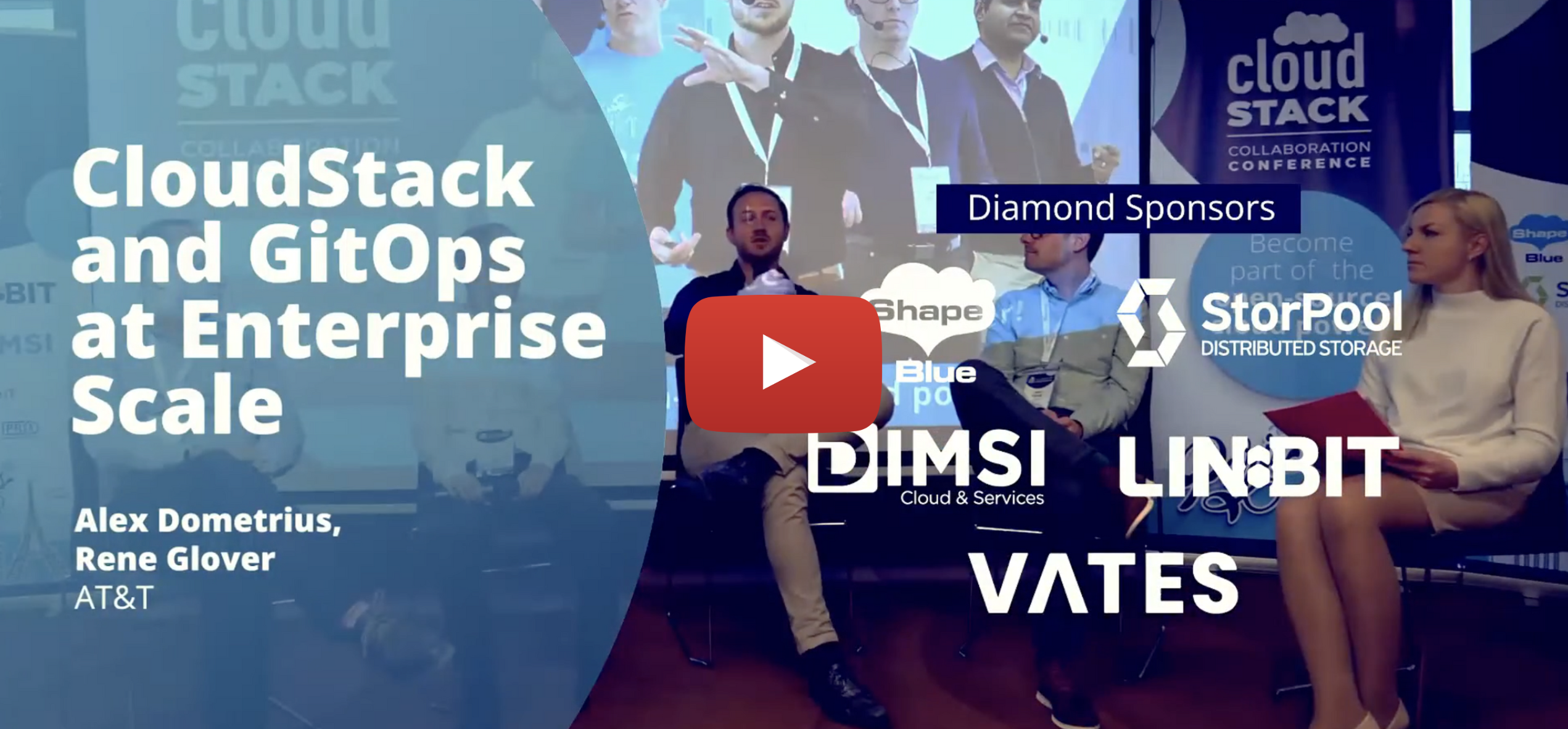CloudStack and GitOps at Enterprise Scale – The Success of AT&T
AT&T is a provider of telecommunications, media, and technology services. The company offers wireless communications, data/broadband and internet services, local and long-distance telephone services, telecommunications equipment, managed networking, and wholesale services. AT&T is a 125+ year old telecommunications company based in Dallas, Texas. Their main purpose is to create connection – a connection to friends, family, work, commerce, education, health, entertainment and more by using advanced technology and delivering services globally.
During the annual CloudStack Collaboration Conference 2023, Alex Dometrius, Associate Director - Technology at AT&T, presented the talk CloudStack and GitOps at Enterprise Scale, where he outlined their journey with Apache CloudStack and the architecture they used to managed their CloudStack-based platform using GitOps.
In the spirit of continuous improvement, Alex’s team looked for an opportunity to improve on how they do infrastructure provisioning within the enterprise ultimately leading to deployment of CloudStack.
After reviewing a few different cloud management platforms, AT&T decided to deploy CloudStack as a centrally-managed and centrally-supported IaaS platform, because if its multi-tenancy, allowing the application teams within the business to maintain their own-dedicated environments. Other reasons to choose CloudStack were the CloudStack Terraform Provider and Native APIs, over-provisioning capabilities and ability to manage the CloudStack-based platform using GitOps.
In their talk during the CloudStack Collaboration Conference, Alex Dometrius shares more about the issued solved and the success with CloudStack. As a follow up of their talk at the event, we asked a few questions to the AT&T team, to understand more about their choice of technology and learn for their experience of managing infrastructure at a large-scale and enterprise level.
Our team has a long history of consuming and contributing to open-source projects and we strive to use open-source technology wherever possible. At risk of stating the cliché benefits of using open-source software, there are several reasons why we lean towards open-source solutions. Cost of entry is generally lower when deploying open-source which allows us to deliver solutions to the business much faster. These costs can also remain lower if there is an active user/contributor community like what we found with CloudStack.
During your talk, you mentioned running PoCs of CloudStack and other technologies. What do you recommended to be tested during a PoC?Why you chose CloudStack? Each use case is different obviously. The scale of the implementation, how users will interact with the platform, how migration from present state to future state can be carried out when deploying a new cloud platform are all items we took into consideration. As mentioned, CloudStack checked several of the requirements we had: multi-tenancy capabilities, support for infrastructure as code, project quota controls, an active open-source community, etc.
How does CloudStack fit with the other technologies AT&T uses internally?CloudStack’s ability to support VMWare was another reason we chose to deploy it. We have an existing VMWare footprint and we chose CloudStack as a mechanism to help continue to support VMWare workloads while also moving to a KVM-focused VM platform. For our team, it was less about how CloudStack fit into our existing technology stack, as this stack has a lot of legacy, home-grown tools, and more about the capabilities CloudStack will provide as an enabler for us to move to a more modern private cloud platform.
Do you run your datacenter ipv4 or ipv4/ipv6 or ipv6 only?Both ipv4 and ipv6.
Why don’t you push back your container image cloudstack mgmt to the community? Do you have plans to contribute to the community?We have already begun contributing back to the community as mentioned with our PR for fiber channel multi-path for KVM. We will look at what makes sense to contribute regarding the cloudstack management container.
What workloads are managed by CloudStack?Our expectation is essentially all workloads in the enterprise can/could be managed with CloudStack. Web applications, Kubernetes clusters, databases, etc.

